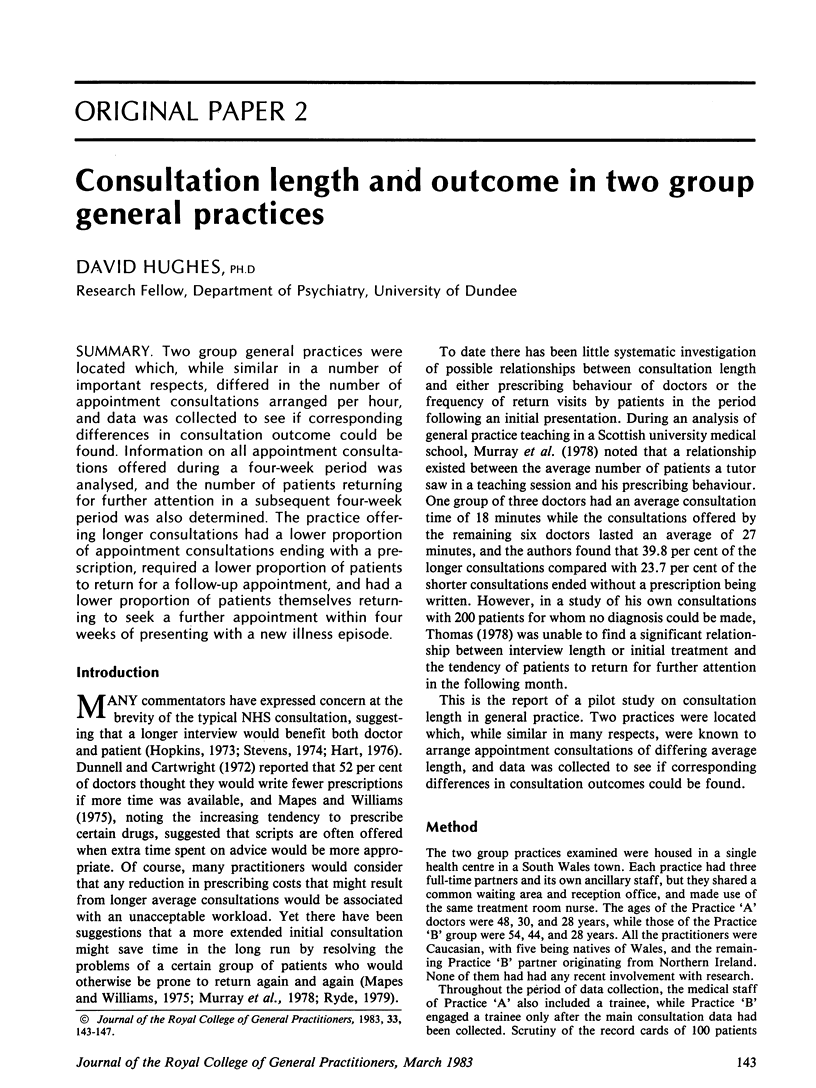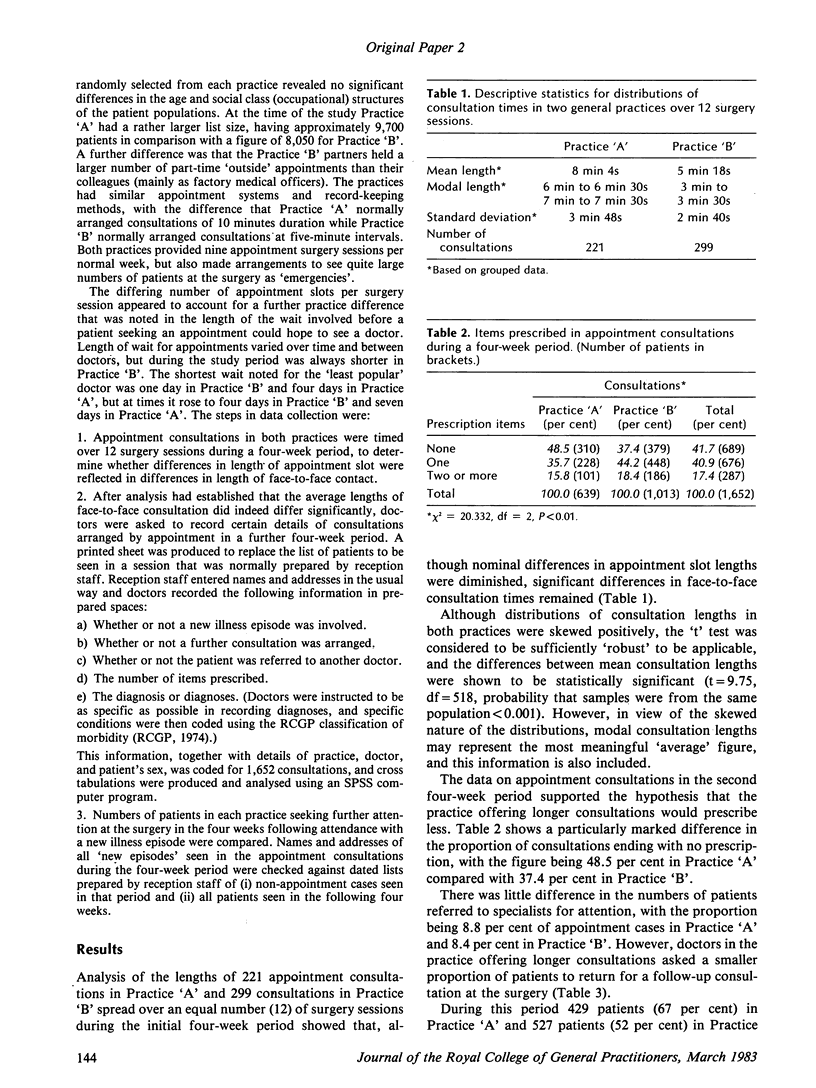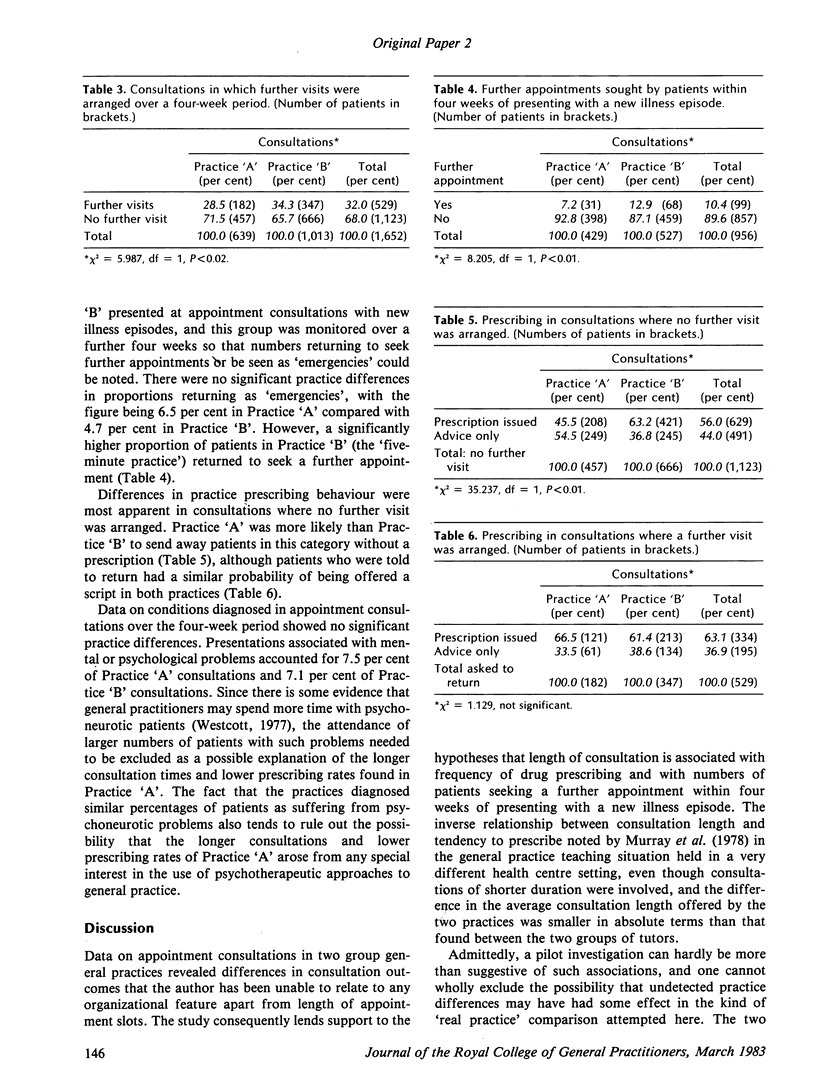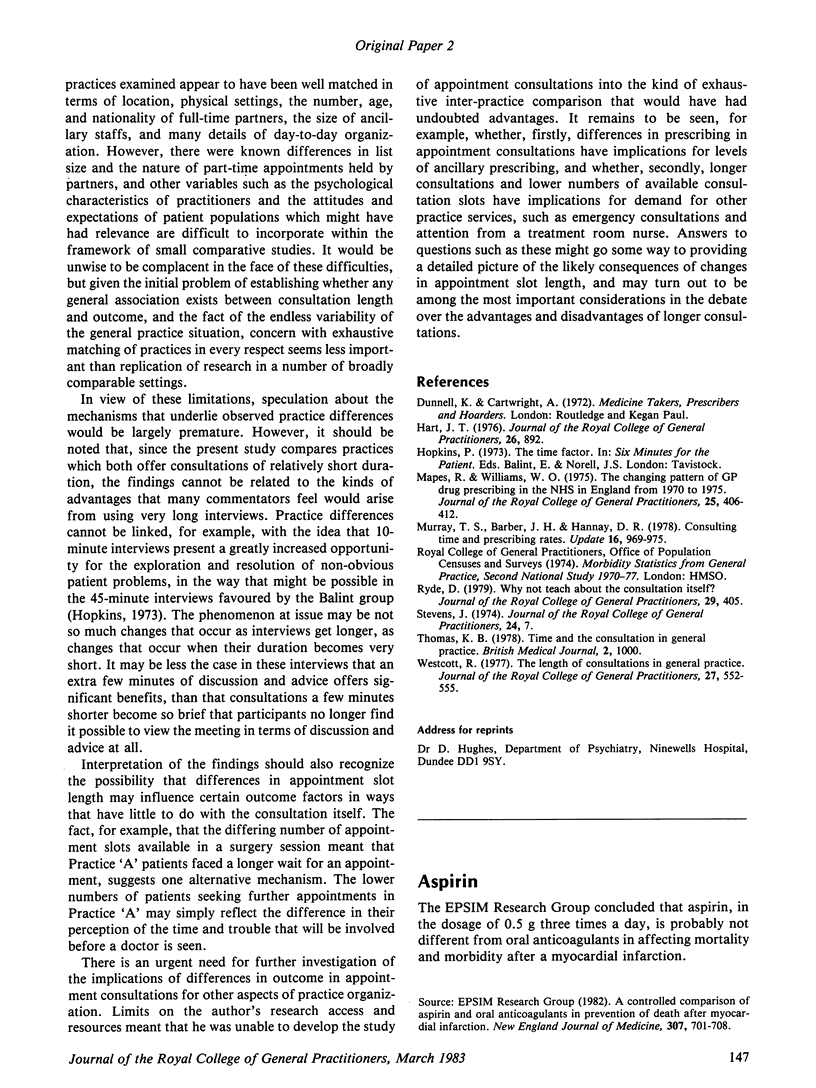Abstract
Two group general practices were located which, while similar in a number of important respects, differed in the number of appointment consultations arranged per hour, and data was collected to see if corresponding differences in consultation outcome could be found. Information on all appointment consultations offered during a four-week period was analysed, and the number of patients returning for further attention in a subsequent four-week period was also determined. The practice offering longer consultations had a lower proportion of appointment consultations ending with a prescription, required a lower proportion of patients to return for a follow-up appointment, and had a lower proportion of patients themselves returning to seek a further appointment within four weeks of presenting with a new illness episode.
Full text
PDF



Selected References
These references are in PubMed. This may not be the complete list of references from this article.
- Hart J. T. General-practice workload, needs, and resources in the National Health Service. J R Coll Gen Pract. 1976 Dec;26(173):885–892. [PMC free article] [PubMed] [Google Scholar]
- Ryde D. Why not teach about the consultation itself? J R Coll Gen Pract. 1979 Jul;29(204):405–405. [PMC free article] [PubMed] [Google Scholar]
- Thomas K. B. Time and the consultation in general practice. Br Med J. 1978 Oct 7;2(6143):1000–1000. doi: 10.1136/bmj.2.6143.1000. [DOI] [PMC free article] [PubMed] [Google Scholar]
- Westcott R. The length of consultations in general practice. J R Coll Gen Pract. 1977 Sep;27(182):552–555. [PMC free article] [PubMed] [Google Scholar]


